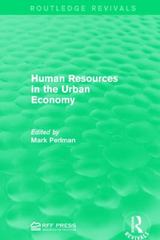Question
1 The US household [You should continue from part 5.] Suppose that the utility function is given by U (c ,l ) = ln(c )
1 The US household [You should continue from part 5.]
Suppose that the utility function is given by U (c ,l ) = ln(c ) + ln(l ) where c is consumption, l is leisure, and is a parameter that determines how much the representative household values consumption versus leisure. Assume that > 0. Let h be the total time endowment, w the wage and the dividend payments.
1. Write down the household optimization problem (don't forget taxes and dividends in the budget constraint)
2. Write down the feasible at the budget line condition.
3. For the optimal trade-off condition for household decisions,
(a) write down the marginal utility of consumption and leisure respectively
(b) write down the opportunity cost of leisure
(c) write down the optimal trade-off condition
4. Solve the household problem. This implies deriving the optimal value of c and l from the two conditions above. The optimal solution must only depend on h, , w, and T .
5. How does leisure change when wages change? Explain in terms of income and substitution effect. 1
6. Let's calibrate the model to the US household. Assume T = 0. In US data we observe that households enjoy 2/3 of their time endowment in leisure. Given this fact derive a realistic value for the parameter (Hint: use the formula in part 4).
7. Let's simulate a recession. For this question set w = 1 (initially) also set h = 1, T = 0.1 and use the value of calculated in the previous calibration step. Suppose the wages decrease by 10% under a recession. How do hours worked change? What happens to consumption? Explain in terms of income and substitution effect. (Hint: Be careful not to mix leisure with hours worked. Also T is now different from zero!)
2 Labor demand across countries
Now let's modify the firm's problem to include a proportional payroll tax. Let be the proportional tax on the firm's wage bill. You can think of the proportional tax as social security contributions by the employer. For example, your salary is $100, 000. If the social security contribution rate for the employer side is 6%,the firm should pay $100, 000 1.06 = $106, 000 for you.
1. Write down the new firm's optimization problem.
2. For the optimal trade-off condition for a firm's labor demand,
(a) write down the marginal product of labor demand
(b) write down the marginal cost of labor demand
(c) write down the optimal trade-off condition for N d
3. Solve for N d in terms of z ,K ,, and assuming that the production function is CobbDouglas: Y = z K N d 1 .
4. Explain how the proportional payroll tax affects the labor demand from the answer in the part 3.
5. Repeat parts 1-4 when the firm receives a subsidy s for each worker instead of paying the proportional tax. For example, if the wage is $100, 000 and the government subsidy is $10, 000 for each worker, the net wage that the firm actually pays is $90, 00
Step by Step Solution
There are 3 Steps involved in it
Step: 1

Get Instant Access to Expert-Tailored Solutions
See step-by-step solutions with expert insights and AI powered tools for academic success
Step: 2

Step: 3

Ace Your Homework with AI
Get the answers you need in no time with our AI-driven, step-by-step assistance
Get Started


